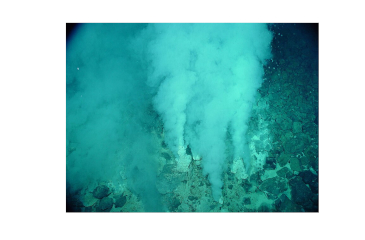Photosynthesis Without the Sun
We all learned about photosynthesis at school. For this particular chemical reaction to take place, you need the chemical chlorophyll together with the essential ingredient, sunlight. For thousands of years, man has known that for green plants to prosper, they need the sunlight.

A few years ago, a team of researchers from the University of British Columbia discovered photosynthesis taking place nearly one-and-a-half miles below the surface of the sea. Of course, no sunlight penetrates to that depth, and that raises an interesting question. The creature performing this amazing task is a bacterium that has been discovered off the coast of Central America. So, how can photosynthesis take place where there is no sunlight?
These bacteria live around hydrothermal vents on the floor of the ocean. The vents spew out superheated water at about 570 degrees Fahrenheit. As this water hits the cold ocean water, gas bubbles form and almost immediately collapse, producing a dim flash of light. Chemical reactions can also create a small amount of light, as does the formation of crystals under these conditions. Apparently, these bacteria are able to make enough energy to power their metabolism from these unlikely sources of light. However, it is difficult to imagine what possible evolutionary process could have given these bacteria that particular ability.
But God, knowing all things, can do the seemingly impossible just for His glory.
Job 8:16
“He is green before the sun, and his branch shooteth forth in his garden.”
Prayer:
Father, I rejoice and praise You, for all that You have made is fearfully and wonderfully made. Amen.
Notes:
Discover, 1/06, p. 36, Anne Sasso, “Photosynthesizing Life-Form Exists Without Sunlight.” Image: White smokers at Champagne Vent, Eifuku, Japan. (PD)